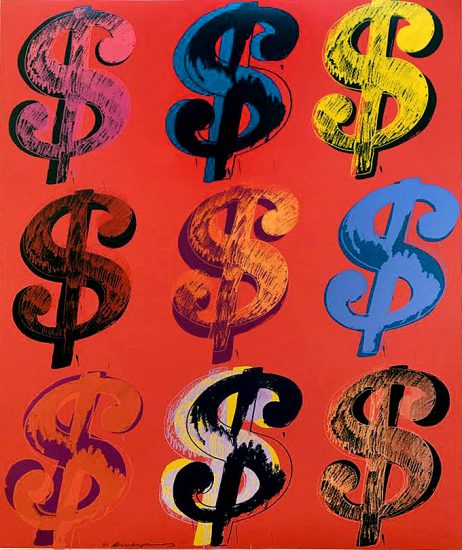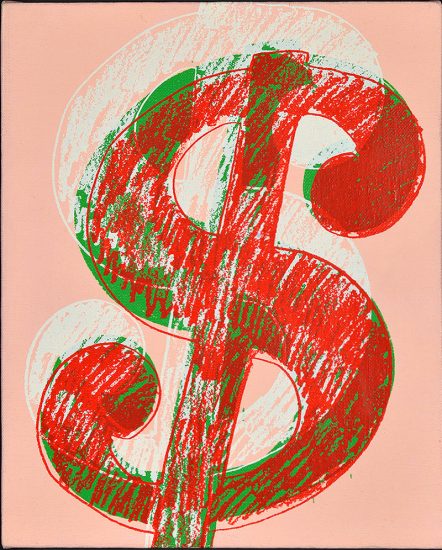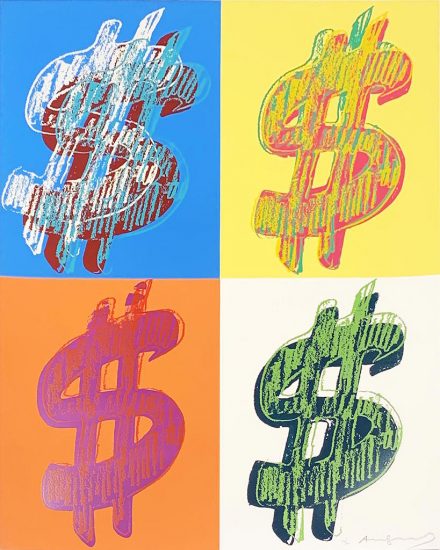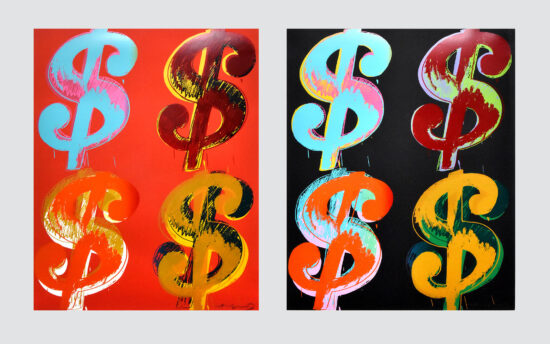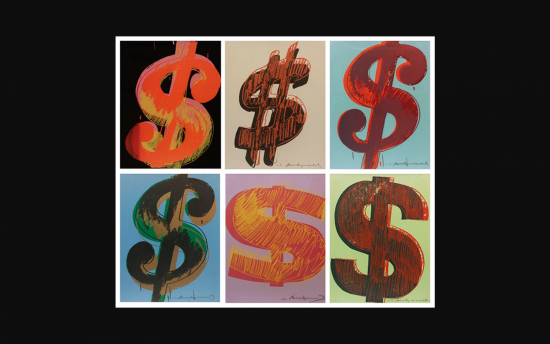The 1982 Andy Warhol Dollar Sign portfolio is a highly significant body of work that is both a celebration and a satire of the relationship between art, wealth, and the American dream. The pop art icon blatantly acknowledges that money is art, and art is money.
Where Warhol's iconic Campbell's Soup uses the titular consumer product as a metaphor for the critique of consumerism, Dollar Signs brings literal money to the forefront with no distractions; the US dollar sign stands alone. This was especially relevant in 1982 when considering the historical context of a period that embraced the marriage of art and money.
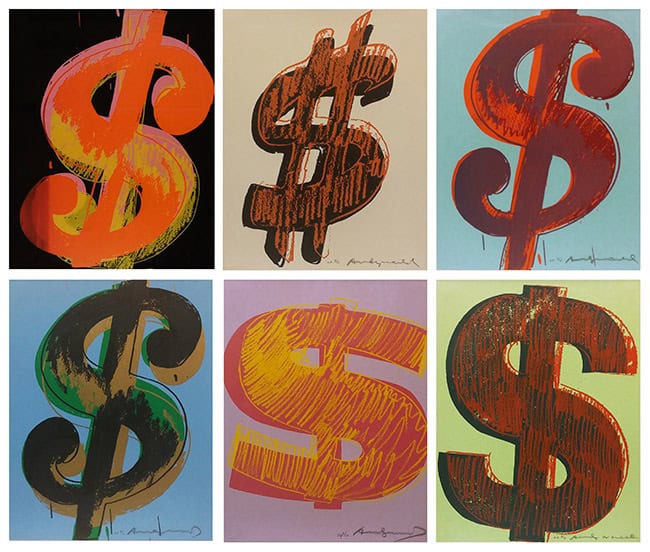
“In creating Guns and Knives in tandem with Dollar Sign, Warhol fulfilled his youthful ambition to create symbols of contemporary society, in this instance conflating issues of money, power, and violence during a time that witnessed the dawning of the neo-conservative Ronald Reagan era and sectarian conflicts around the globe.” [1]
But why the dollar sign?
Warhol explains simply, “... one lady friend asked the right question, 'Well, what do you love most?' That's how I started painting money.” [2]
Sotheby’s contemporary art specialist James Sevier states, “Interestingly [Warhol] looked at the one and two dollar bills, rather than the fifty or the hundred, because of their accessibility, like with the Campbell’s soup cans.” [3]
The screen prints of this 1982 portfolio reflect Warhol's early use of money seen in his original hand-painted dollar bill [4] in 1962 which was then used as the artist's first series using the screen print process.
In a rare instance, the pop art legend used his own hand to create the original image for these works, a departure from using appropriated images in most of the artist's oeuvre.
Warhol's Dollar Sign ironically captures the complicated entanglement, and contradictions, of materialism, consumerism, wealth, and power of the American dream on the canvas of a material product for sale often only consumed by those with money.
Warhol was also not shy about what often guided his own decisions about what art to create. He openly asserted that "making money is art and working is art and good business is the best art." [5]
"Like his fascination with celebrity and religion, Warhol was keenly aware that the power of wealth was shadowed by its evil twin—greed—and to be held in its grasp spelled success on the one hand, and ruin on the other." [6]
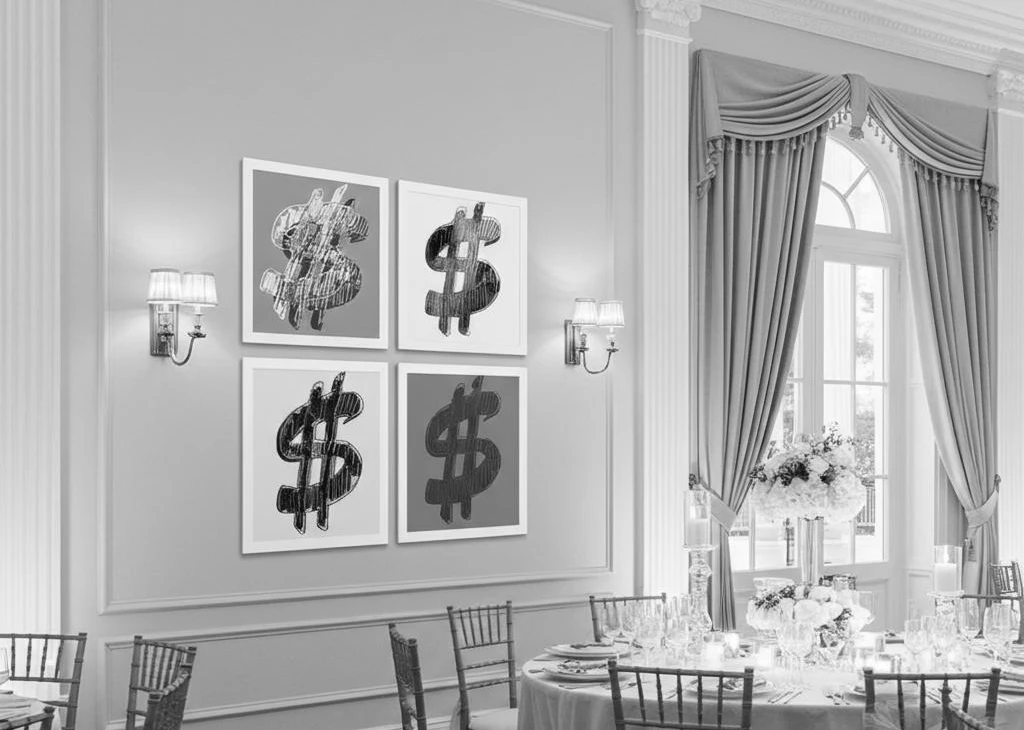
What is the meaning of Warhol's Dollar Sign?
The ultimate commodity of money sketched in a cartoonishly large form becomes a visual satire of the good and the bad of the relentless pursuit of wealth in American culture. Dollar Sign illustrates the artist's constant challenge of the status quo of the art world and of society at large.
The portfolio elevates the almighty dollar sign to a symbol of worship for a culture that embraces financial power as central to its identity.
The commentary remains deeply relevant today.
.
Historical Documentation
• The portfolio was published by Artforum in 1982.
• The portfolio was first exhibited in 1982 at Castelli Gallery in SoHo, New York City. [7]
.
Art Market Value
• Warhol’s original painting, 'One Dollar Bill (Silver Certificate)' fetched £20.9m at Sotheby's in 2015
.
Catalogue Raisonné
• Feldman, Frayda and Jörg Schellmann. Andy Warhol Prints: A Catalogue Raisonné 1962 – 1987, 4th Ed. New York: Distributed Art Publishers, Inc.: 2003. [8]
• Each work is a unique color screen print on Lenox museum board
• Hand-signed by Andy Warhol (Pennsylvania, 1928 - New York, 1987) in pencil in the lower right
• Numbered from the edition in pencil in the lower right
• Listed and illustrated in four catalogue entries with each entry containing variants.
.
Example Unique Variants [9]
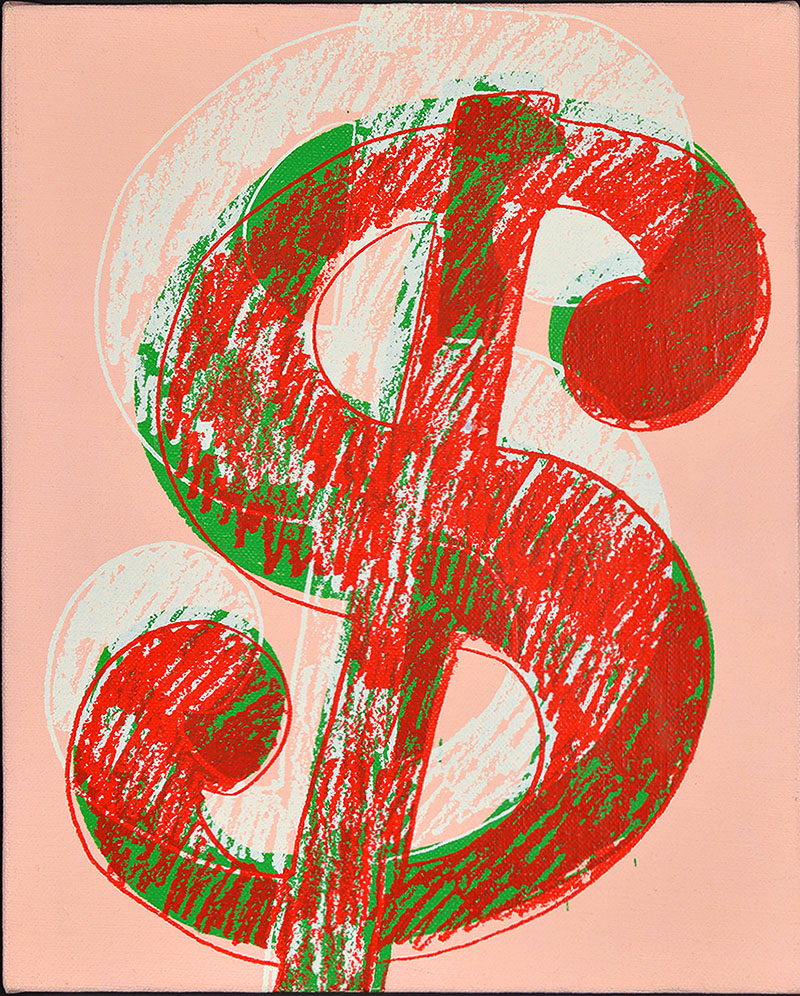
- Dollar Sign
- FS II 274 - 275
- Edition of 60
- Availability: for sale
.

- $ (4)
- FS II 281 - 282
- Edition of 35
- Availability: for sale
.
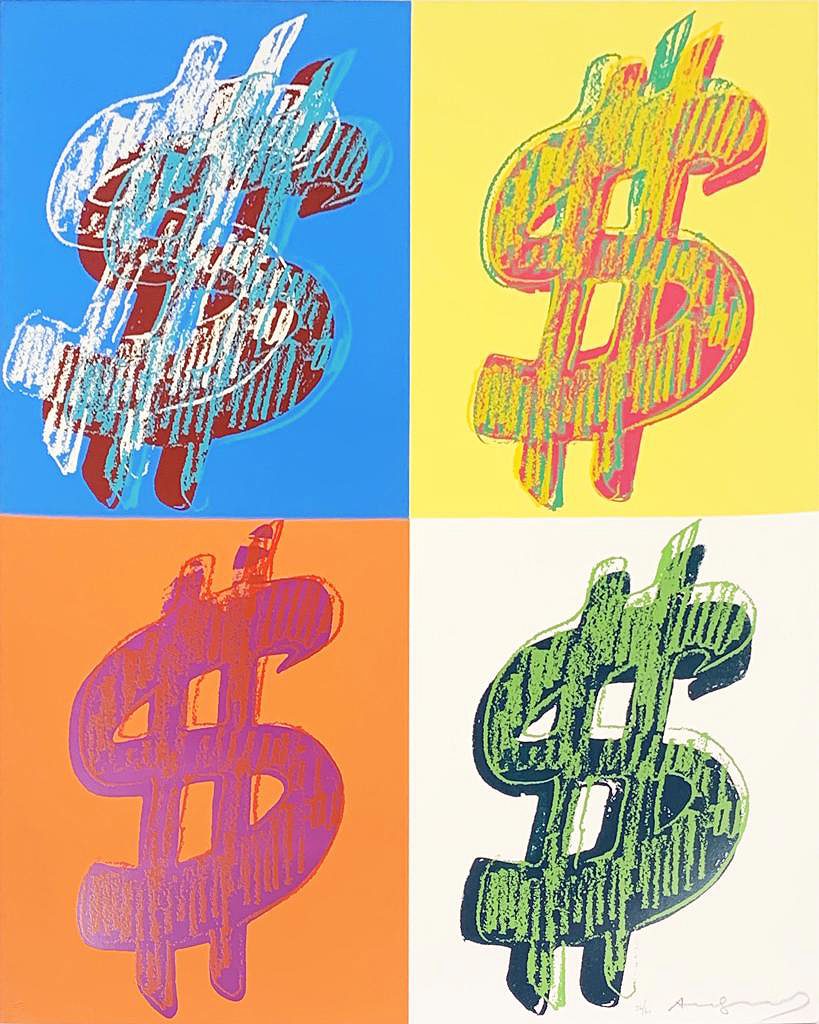
- $ (Quadrant)
- FS II 283 - 284
- Edition of 60
- Availability: for sale
.
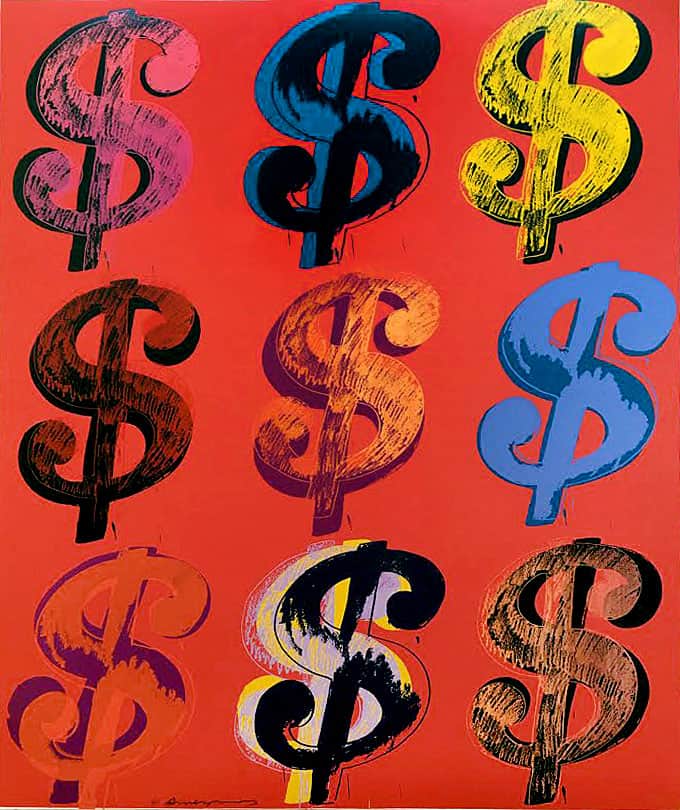
- $ (9)
- FS II 285 - 286
- Edition of 35
- Availability: for sale
.
Citations
1. Christie's, London, 08 February 2007, lot 5, https://www.christies.com/en/lot/lot-6076450
2. "Warhol’s Dollar Bill Fetches $32.8 Million at Sotheby’s London", Artnet News, https://news.artnet.com/market/warhol-dollar-bill-32-million-sothebys-london-313632
3. "Andy Warhol work in 'Dollar Art' London auction", BBC News, https://www.bbc.com/news/av/entertainment-arts-33058821
4. "Sotheby’s London Next Contemporary Art Sale is All About the Money, Literally", Artnet News, https://news.artnet.com/market/dollar-themed-auction-sothebys-london-306242
5. "Andy Warhol: The Product", Carnegie Magazine, https://carnegiemuseums.org/carnegie-magazine/summer-2025/andy-warhol-the-product/
6. Christie's, London, 08 February 2007, lot 5, https://www.christies.com/en/lot/lot-6076450
7. "Andy Warhol - Dollar Signs - Exhibitions", Castelli Gallery, https://www.castelligallery.com/exhibitions/andy-warhol2
8. "Andy Warhol Prints: A Catalogue Raisonné", The Andy Warhol Foundation for the Visual Arts, https://warholfoundation.org/warhol/catalogue-raisonne/catalogues-raisonnes-print/
9. Masterworks collection for sale: Andy Warhol Dollar Sign


